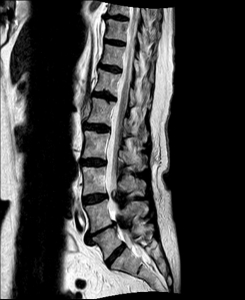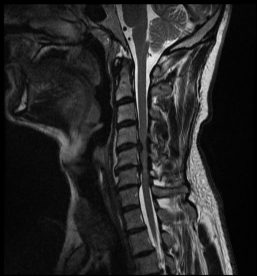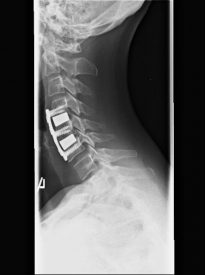Spinal Stenosis
Spinal Stenosis
Spinal stenosis or spinal canal stenosis usually develops as a result of advanced wear and tear. It is often manifested by pain in the legs, which is particularly noticeable after long walks. Spinal stenosis often occurs in phases, with rest periods of several months in some cases. Conservative therapy should be started at the latest when the symptoms are permanently limiting. If there is no improvement in the later stages, the spinal canal can be widened again surgically.
Spinal stenosis can also occur in the cervical spine. In this case, an orthopedist should be consulted at an early stage due to the risk of a spinal cord lesion. Warning signs can be, for example, the regular dropping of objects or gait difficulties with the feeling of "drunken walking". If such a spinal cord lesion has already occurred or is increasing, surgery should be discussed openly.

MRI with lateral reconstruction of the lumbar spine. The hourglass-like narrowing of the spinal canal can be seen at two heights.


MRI with lateral reconstruction of the cervical spine and a lateral postoperative radiographic check. On the left, an hourglass-shaped constriction of the spinal cord can be seen. The right image shows the condition after surgical decompression and stabilization.






